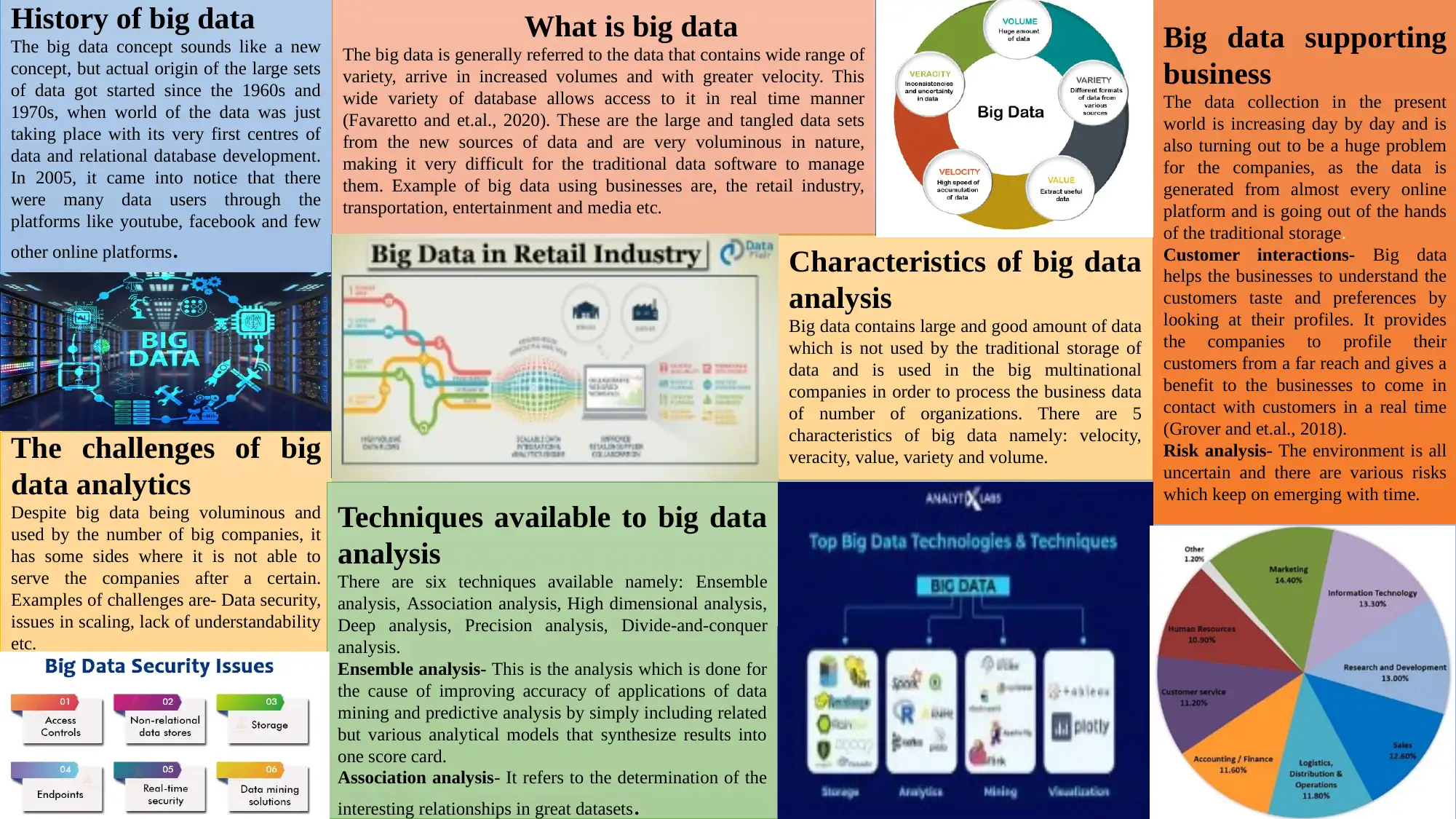Analysis of Big Data: Techniques, Applications, and Business Use
VerifiedAdded on 2023/06/08
|1
|511
|85
Report
AI Summary
This report provides a comprehensive overview of big data analysis, covering its historical context, from the early stages of data management in the 1960s and 1970s to its current significance. It defines big data, emphasizing its characteristics of volume, velocity, and variety, and highlights its applications in industries like retail and entertainment. The report also addresses the challenges associated with big data, such as data security and scalability issues. It explores the five key characteristics of big data: velocity, veracity, value, variety, and volume. Furthermore, it outlines various techniques used in big data analysis, including ensemble analysis, association analysis, high-dimensional analysis, and deep analysis. The report also explains how big data supports businesses, particularly in understanding customer preferences and conducting risk analysis, emphasizing its role in modern business operations.



![[object Object]](/_next/static/media/star-bottom.7253800d.svg)